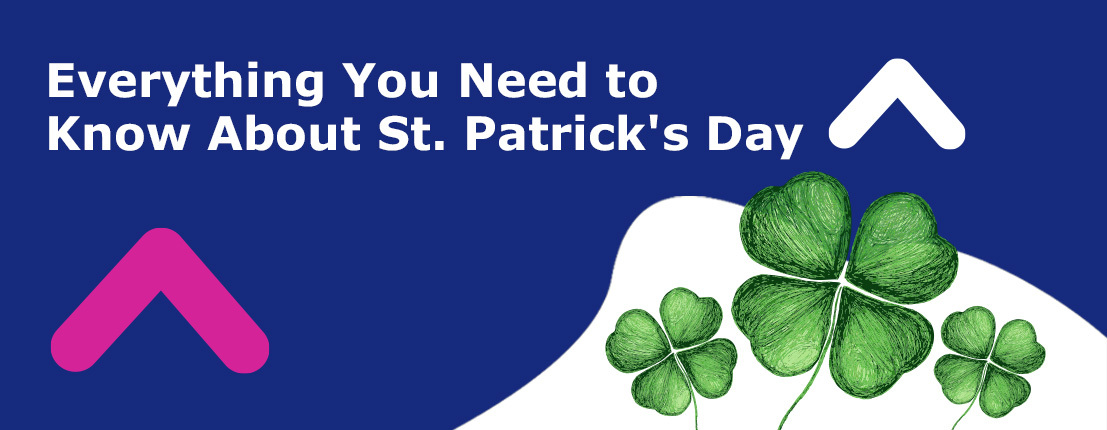Everything You Need to Know About St. Patrick's Day
Entertainment
3 mins read
Share

Updated at: 25 November, 2025
Published at: 16 March, 2021
By Amira Adel
Everything You Need to Know About St. Patrick's Day
Entertainment
3 mins read

Updated at: 25 November, 2025
Published at: 16 March, 2021
By Amira Adel
Share
St. Patrick’s Day - also known as the Feast of Saint Patrick - is a religious and cultural holiday celebrated on March 17, which is the day Saint Patrick, the foremost patron saint of Ireland, passed away. St. Patrick’s Day is a holiday that later became a celebration of Irish culture with special food, parades, dancing, music, drinking, and a whole lot of green decoration!
1. Who was St. Patrick?
Saint Patrick was born in Roman Britain in the 4th Century. At age 16, he was kidnapped by Irish raiders and taken to Ireland as a slave. After toiling for six years as a shepherd, he escaped back to Britain but later returned to Ireland as a Christian missionary. By the time of his death on March 17, 432, he had established churches, monasteries, and schools. He was also known for using the three leaves of the native Irish clover, the shamrock, to explain the Holy Trinity - the Father, the Son, and the Holy Spirit.
2. The First Celebration of St. Patrick’s Day
The Irish have considered this day a holiday for over a thousand years. St. Patrick’s Day takes place during the Christian period of Lent, when Irish families would traditionally go to church in the morning and then celebrate in the afternoon. The earliest known celebration of St. Patrick’s Day was held on March 17, 1631. However, the first St. Patrick’s Day parade didn’t take place in Ireland, but in America on March 17, 1601, in a Spanish colony which is now known as St. Augustine, Florida. A year earlier, the Spanish Colony's Irish vicar Ricardo Artur organised the celebration and the parade. Boston held its first St. Patrick’s Day parade in 1737, and then New York followed in 1762.
3. The Chicago River Going Green
In 1962, Chicago coloured its river green in celebration of St. Patrick’s Day. The tradition began when dyes were used by city pollution-control workers to trace illegal sewage discharges; they then thought that the green dye might be a unique way to celebrate the holiday. That year, 100 pounds of vegetable dye was released into the river, which was enough to keep the river’s colour green for a week. Nowadays, only 40 pounds of green dye is used to minimise environmental damage, making the river turn green for just several hours. Irish and non-Irish people commonly participate in the tradition of “wearing green”, and that’s why the shamrock is the traditional plant of this holiday.
4. The Shamrock
The shamrock - which is also called “the seamroy” by the Celts - is a three-leaf clover that was considered a sacred plant in ancient Ireland because it symbolises spring’s rebirth. The shamrock became a symbol of emerging Irish nationalism by the 17th century when the English seized the Irish land and banned the use of the Irish language and Catholicism. The Irish began to wear the shamrock as a symbol of their pride in their heritage and as an act of rebellion against the English rule. Since it already held positive connotations for the Irish, St Patrick used the Shamrock in his teachings to represent the Holy Trinity.
5. Leprechauns
The green-clothed, red-headed Leprechaun is commonly associated with St. Patrick’s Day. The original Irish name is “lobaircin”, which means “small-bodied fellow”, and it stems from the Celtic belief in fairies and tiny men and women who use their magical powers to serve good or evil. Leprechauns are considered a symbol of St. Patrick’s Day, with many people dressing up as fairies.
6. Cabbage and Corned Beef
Eating a meal consisting of cabbage and corned beef is considered a “traditional” meal on St. Patrick’s Day. Cabbage and ham were traditionally eaten in Ireland; however, immigrants in the 19th and early 20th century introduced corned beef as a cheaper alternative.
7. St. Patrick's Day Celebrations Around the World
People of all backgrounds celebrate St. Patrick’s Day nowadays, especially throughout Canada, Australia, and the United States. It’s also celebrated around the world in many locations far from Ireland, such as Russia, Japan, and Singapore. The holiday’s recipes include cabbage, corned beef, champ, and Irish soda bread. People in the United States usually celebrate by wearing green coloured clothes on this day.
Entertainment
By Amira Adel
Share
Entertainment
Updated at:
Published at:
By Amira Adel
Share

